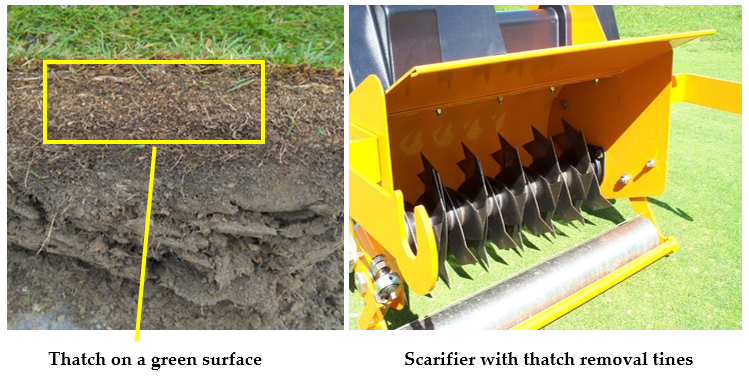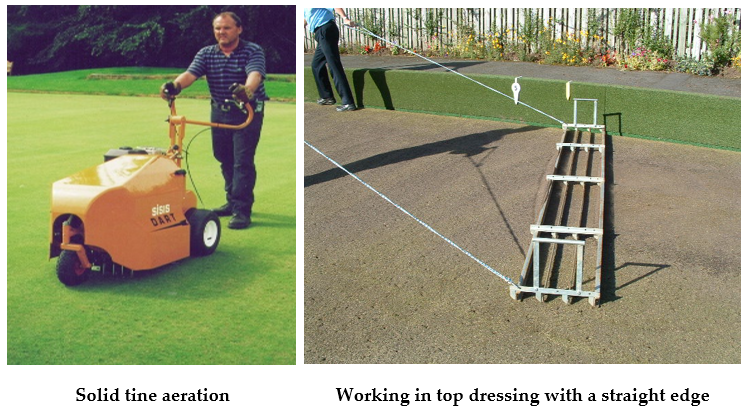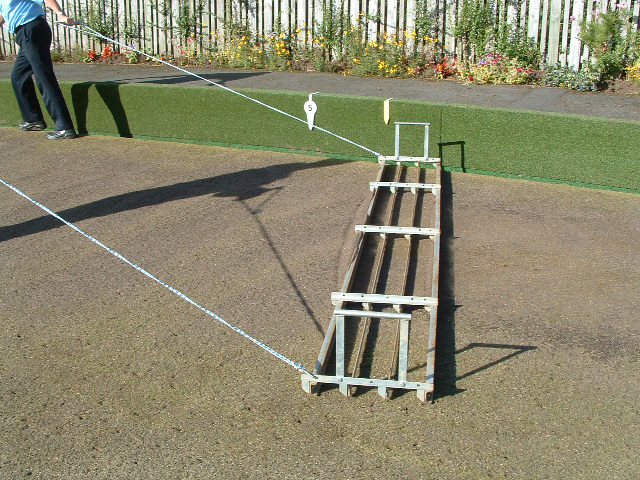What a difficult year it has been. Even though bowling greens have not been used as much as usual, the surface will still need an end of season renovation – but not to the normal levels.
Our specialist Greens Maintenance Advisor, Alan Lewis, shares his advice to ensure your green receives the required treatment this Autumn.
As with all work on the green, take the time to assess the surface and the soil profile so the club has target resources. Most important is looking at the depth of ‘thatch’ organic matter as this affects so many things on the green such as:
- Green speed
- Effect of the wood bias
- Root growth
- Conditions to encourage moss
- Irrigation depth
- Varieties of grasses
With the natural process of growing, the grass plant produces dead material. This happens whether you play or not, so please ensure the green is scarified well as part of the end of season renovation. Use a scarifier with thatch removal tines but only scarify to the depth of the organic matter. You will not remove all the organic matter in one year.
 Due to fewer players on the green, compaction levels will not be as high, but still aerate the green after scarification to get air into the soil and improve root growth. A standard 100mm deep solid tine will be sufficient.
Due to fewer players on the green, compaction levels will not be as high, but still aerate the green after scarification to get air into the soil and improve root growth. A standard 100mm deep solid tine will be sufficient.
I would still over-seed the green as the grass plant qualities improves each year such as disease resistant, but the rate can be reduced as you will not have the wear on the rink ends.
The grasses sown on a bowling green have for many years been:
- Browntop Bent (Agrostis capillaris)
- Chewings Fescue (estuca rubra commutate)
And the fastest grass for bowling greens being:
- Slender Creeping Red Fescue (Festuca rubra literalis)
But in the last few year I have specified Perennial Rye Grass in the mixture for Bowling Greens up to 30%. The new varieties are as fine as Fescue but have greater wear tolerance for rink ends etc.
Three points to consider if you use Perennial Rye Grass on your green are as follows:
- Perennial Rye Grass plants will ‘Crown’ (make a clump) if you do not groom or verti-cut the green regularly (once every two weeks). The clumps can deflect some woods.
- Perennial Rye Grass is a much hungrier grass than Bents and Fescues, so you need to keep up the nutrient levels.
- You may need to adjust your greens’ pH level. Bent and Fescues like an acidic green around 5.5 and Perennial Rye Grass performs best at 6.5. Aim for a pH of 6.0 to keep all grasses happy.
If you have high wear particularly on rink ends, I recommend 30% Perennial Rye Grass in your over-seeding mix but check the varieties are fine leaved.
Apply a fertiliser as normal – the grass plant still uses nutrients as part of the growing process. Please base the fertiliser on a soil test. An autumn winter fertiliser should contain more Phosphate and Potassium than Nitrogen for root growth and disease/frost protection.
Due to less play than a normal season, wear on rink ends will be greatly reduced so large amounts of top dressing are not required. I would recommend a light dressing, say 50% of normal, just to cover the seed to help with germination and minor levels. To improve or maintain levels on a flat green ensure the top dressing is worked into the surface with a straight edge – not a brush or drag mat.

So, processes of renovation stay the same but reduce topdressing material and do a basic aeration to a depth of 100mm. Continue to aerate through the autumn winter and fertilise again around the end of December.
Alan Lewis MSc NDT F inst G
Bowls England Greens Maintenance Advisor
Alan will continue to provide regular updates for Clubs with advice on green management. To receive direct to your inbox, sign up to our e-newsletter here.
